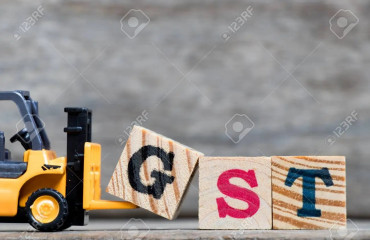
The latest rationalisation of GST slabs has sent a quiet but significant signal: tax rates are no longer untouchable. In the past, governments have hesitated to fiddle with tax rates much, on the premise that a bird in the hand is worth two in the bush.
The latest rationalisation of GST slabs has sent a quiet but significant signal: tax rates are no longer untouchable. In the past, governments have hesitated to fiddle with tax rates much, on the premise that a bird in the hand is worth two in the bush.
This has been true of both direct taxes—where corporate taxpayers have benefited much more than the individual salaried middle-class taxpayer—and indirect taxes, which fall on the end consumer.
The introduction of the goods and services tax (GST) regime in 2017 replaced a maze of excise and sales taxes with a uniform nationwide tax and eliminated double taxation through input tax credit.
But its success came at a cost: a complex five-slab structure and a costly promise to compensate states for revenue losses, funded by additional borrowing and a compensation cess on consumers.
The current restructuring goes some way towards correcting this, but it's not a complete fix.
While the weighted average tax incidence of GST will drop below 10%, the bulk of collections, at over 65%, will still come from the 18% slab, which is quite high.
Multiple slabs have historically created classification disputes, blocked working capital, and slowed cash flows for MSMEs and exporters. A cleaner rate structure eases these frictions but leaves bigger issues untouched.
The toughest reforms—bringing petroleum and alcohol under GST—remain stalled. After the sunset of the compensation cess, state GST and GST devolutions have now become the biggest source of revenue for states. But fuel and alcohol remain close seconds. States are clearly not yet convinced of the consumption effect of lower taxes enough to let go of these sources of revenue.
The current restructuring will place additional pressure on states to find alternative sources of revenue. According to credit rating agency Icra, SGST plus tax devolution accounts for over half of the states' total revenue receipts.
Since revenue foregone will not be uniform across states, "any revenue foregone by the Centre and the state governments would need to be offset through other revenue streams or expenditure rationalisation," the report noted.
This brings up the other major stumbling block in the path of further rationalisation and reduction of GST. Since GST is a destination tax, with revenue accruing at the point of consumption, producer states benefit relatively less than consumer states.
Of course, scale still matters. Large producer states such as Maharashtra, Gujarat, Tamil Nadu and Karnataka, which have higher average incomes and large populations, are ahead. But on the whole, the GST system, by design, is weighted towards consumption.
This, as the Centre discovered through bitter experience in the GST Council, where each state has an equal vote, becomes very difficult to reach any consensus given the sharply divergent interests of producer and consumer states.
A consumer-heavy state like Arunachal Pradesh depends heavily on central devolution—up to 72% of its revenue. For Bihar, it is around 60% and for Uttar Pradesh, it is around 50%. Producer states like Haryana, Tamil Nadu, Maharashtra, Gujarat and Telangana depend on devolution for under 20% of their total revenue receipts.
This is the crux of the political economy challenge of GST rationalisation. GST is not just a tax—it is a contract between the states and the Centre. The Centre needs the states on board to effect any rationalisation. The states need certainty of revenue and an assurance of fair devolution before they will cede any further powers of taxation.
States generate around 40% of revenues and bear 60% of expenditure. However, the Centre has been taking a larger share of the revenues collected, since about 23% of central government revenues come from cesses and surcharges, which do not go into the divisible pool of funds.
Against the 41% share going to states envisaged by the Finance Commission, the actual devolution is around 32%. Naturally, states want firm guarantees, like the GST compensation cess, before giving up more control.
States, on the other hand, have done little to explore new and innovative ways to raise revenues and have preferred to rely on low-hanging fruit like alcohol and fuel taxes and stamp duty. Even in the case of stamp duty, there is considerable headroom for improvement. India's stamp duty realisation is roughly 0.2% of GDP compared to 1.1% in OECD countries, according to a World Bank study.
States can raise more on their own by reforming property tax, asset monetisation, market-driven user charges for services, and better price discovery and capture of natural resources. And capturing part of the land value appreciation due to infrastructure creation by the government—roads, metros, etc.—offers another avenue to raise additional resources.
To achieve a truly simple and efficient GST structure, states will have to lift their share of the weight. The next stage of reform depends on it.
